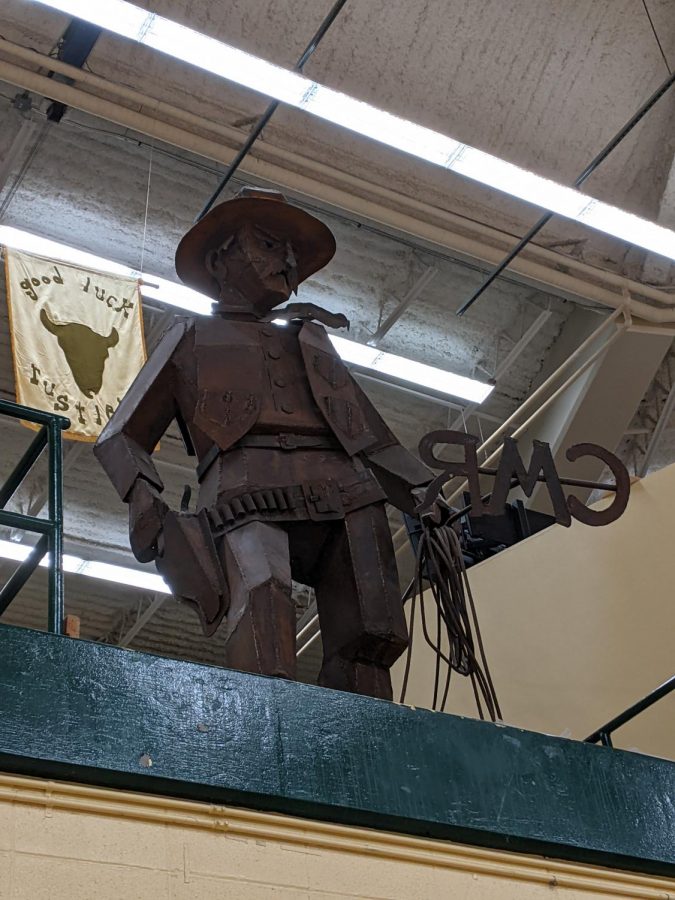Branding keeps cattle farmers in the ancient past
Photo by David Miller
Branding blatantly represented and celebrated through the iron statue in the CMR gymnasium.
March 24, 2021
Please consider the following: you are immobilized, held down by restraints, and without seeing its source, you feel a searing pain near your thigh. The smell of burning flesh stings your nostrils and smoke brings water to your eyes. After the longest five seconds of your life, you’re simply pushed away.
Animal branding is a form of animal cruelty that has been around for more than 4,500 years as a way to claim cattle and deter cattle thieves. Most commonly, an iron rod with a logo of sorts on the end of it is heated to almost red hot temperatures and is applied to the skin of cattle, searing the flesh and leaving a burn.
Another method is freezing, which consists of pressing dry ice and liquid nitrogen, at temperatures as low as -197°C, to the cow’s skin creating an edema (swollen skin).
Many countries have loose, if any, guidelines for cattle branding, allowing the mutilative practice to continue, with the exception of countries such as the United Kingdom, which prohibits branding on dairy cows.
Living in Montana, it’s hard to avoid conversation or any mention of branding. The statue in the school’s gym shows our mascot holding a cattle brand as almost a sign of strength. It’s disappointing that such a cruel act has been ingrained in our school’s culture, and is something that needs to be addressed.


